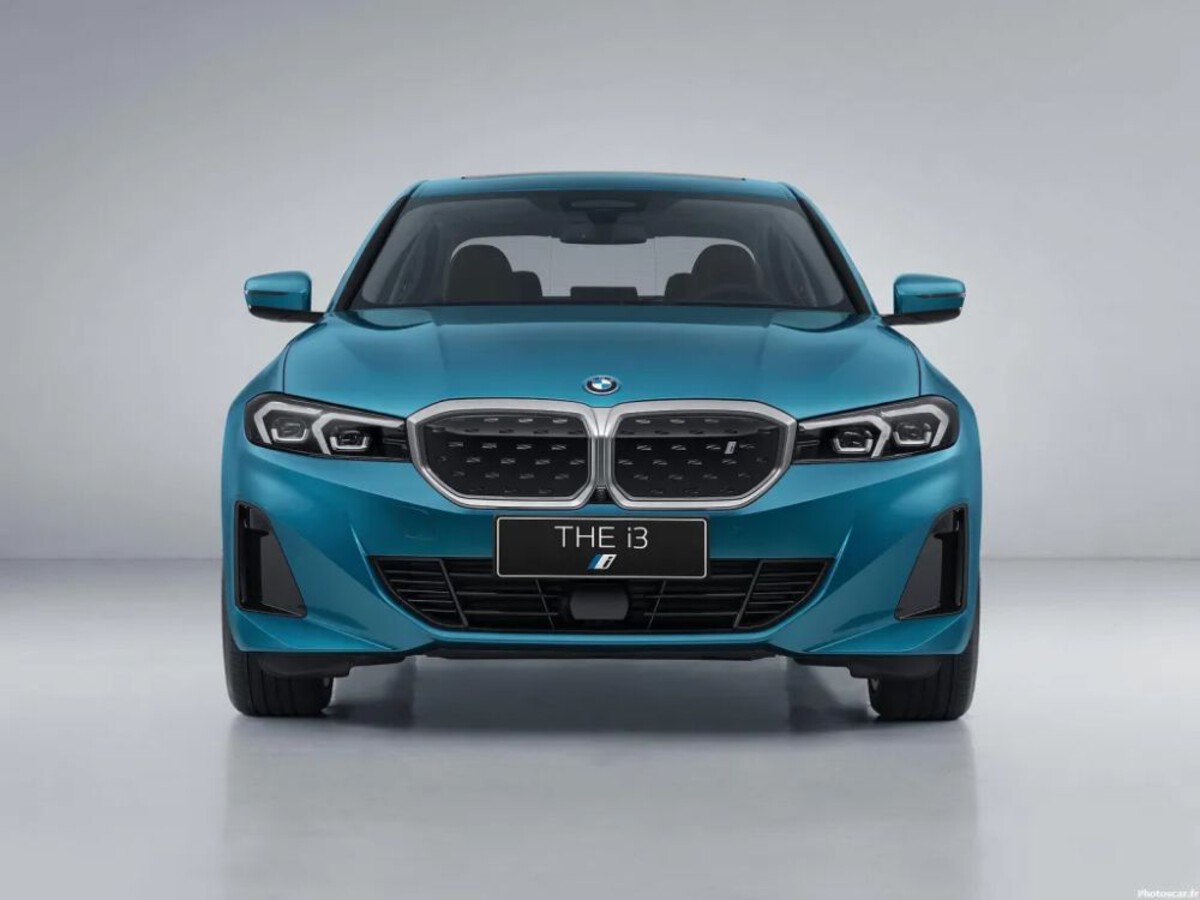The automotive landscape in rural America operates by fundamentally different rules from urban markets. Where city dwellers might prioritize fuel efficiency, compact size, and luxury features, rural buyers focus on practicality, durability, and capability.
The resale market in these areas reflects the unique demands of country living: hauling equipment, navigating unpaved roads, enduring harsh weather conditions, and traveling long distances between destinations.
Rural America encompasses vast agricultural regions, mining communities, ranch territories, and small towns where the nearest dealership might be hours away. In these markets, a vehicle’s reputation for reliability often matters more than its latest technology features.
Word-of-mouth recommendations carry tremendous weight, and a truck that can pull a livestock trailer through mud after ten years of hard use will always find a buyer.
The geographic isolation of rural areas also influences buying patterns. When the nearest mechanic specializes in domestic brands, or when parts availability becomes a concern, certain vehicles naturally rise to the top of buyers’ lists.
Additionally, the practical nature of rural work means that form often follows function a pretty car that can’t handle farm work simply won’t hold its value.
Understanding these market dynamics reveals why some vehicles maintain strong resale values in rural areas while others struggle to find buyers, regardless of their success in urban markets.
5 Cars That Resell Easily in Rural America
Rural buyers seek reliability and strength; trucks and SUVs dominate the demand. These vehicles hold their value well, making resale quick and profitable.
In rural America, vehicles that offer durability, off-road capability, and towing power tend to resell quickly. Pickup trucks like the Ford F-150 and Chevrolet Silverado 1500 are highly sought after due to their rugged build and versatility.
The Toyota Tacoma is another favorite, known for its reliability and ability to handle rough terrain. SUVs such as the Subaru Outback and Jeep Wrangler also perform well in resale markets, thanks to their all-weather capabilities and strong brand reputation.
These vehicles are practical for farming, outdoor activities, and long-distance travel, making them ideal choices for rural buyers.
1. Ford F-150
The Ford F-150 stands as the undisputed king of rural resale markets, maintaining its position as America’s best-selling pickup truck for over four decades.
This dominance isn’t accidental, it’s built on a foundation of proven capability, widespread dealer support, and an almost mythical reputation for durability that has been earned through generations of hard work in America’s heartland.
What makes the F-150 so valuable in rural markets starts with its incredible versatility. Whether you need to haul a horse trailer to the county fair, transport hay bales across muddy fields, or pull a boat to the lake for weekend fishing, the F-150 handles these tasks with confidence.
The truck’s payload and towing capacities have steadily improved over the years, with modern versions capable of towing up to 14,000 pounds when properly equipped.
This capability translates directly into resale value because rural buyers know they’re purchasing a tool that can handle whatever job comes next. The F-150’s engine options cater to different rural needs and budgets.
The base V6 provides adequate power for light-duty work while delivering reasonable fuel economy for long commutes to town. The EcoBoost V6 engines offer impressive power and torque figures that rival V8 performance while maintaining better fuel efficiency.
For those who need maximum capability, the available V8 engines provide the grunt necessary for the heaviest towing and hauling tasks. This range of powertrains means there’s an F-150 configuration for virtually every rural application, supporting strong resale values across the entire lineup.

Durability is perhaps the F-150’s greatest asset in rural markets. These trucks routinely accumulate 200,000 or more miles while continuing to perform daily work duties.
The body-on-frame construction provides the structural integrity needed for heavy use, while the proven drivetrains have decades of real-world testing behind them.
Rural buyers often keep their F-150s for many years, but when it comes time to sell, the reputation for longevity means buyers are willing to pay premium prices even for high-mileage examples.
The dealer network supporting the F-150 is unmatched in rural America. Ford dealerships can be found in small towns across the country, providing accessible service, parts availability, and warranty support.
This extensive network gives buyers confidence that they’ll be able to maintain their truck locally, which is crucial in areas where the nearest alternative brand dealer might be hours away.
Ford’s continuous innovation while maintaining core strengths has kept the F-150 relevant across generations. The aluminum body introduced in 2015 reduced weight while maintaining strength, improving fuel economy without sacrificing capability.
Advanced towing features like Pro Trailer Backup Assist make difficult tasks easier, while Ford’s Co-Pilot360 safety suite provides modern protection features. However, these innovations complement rather than replace the fundamental work-truck character that rural buyers value.
The F-150’s strong resale value creates a virtuous cycle in rural markets. Buyers know their investment will hold value, making them more willing to purchase new or late-model used examples.
This sustained demand keeps prices elevated throughout the depreciation curve, benefiting both original owners looking to sell and dealers stocking used inventory.
2. Chevrolet Silverado 1500
The Chevrolet Silverado 1500 occupies the second position in rural America’s pickup truck hierarchy, offering a compelling alternative to Ford’s dominance while maintaining its loyal following built on decades of proven performance.
The Silverado’s success in rural markets stems from General Motors’ deep understanding of work truck requirements, combined with a dealer network nearly as extensive as Ford’s and a reputation for building trucks that can handle the demanding conditions of country life.
Chevrolet’s approach to the Silverado emphasizes traditional truck virtues that resonate strongly with rural buyers. The truck’s substantial feel, solid construction, and straightforward operation appeal to those who view their vehicle as a working tool first and transportation second.
This philosophy shows in details like the Silverado’s heavy-duty suspension components, robust frame construction, and powertrains designed for sustained heavy use rather than peak performance numbers.
The engine lineup in the Silverado addresses the full spectrum of rural needs. The standard 2.7-liter turbo four-cylinder, while initially met with skepticism by traditional truck buyers, has proven itself capable of handling everyday truck duties while delivering impressive fuel economy.
The available V6 and V8 engines provide the power and torque characteristics that rural buyers expect, with the 6.2-liter V8 delivering the kind of effortless power that makes towing heavy loads feel manageable rather than stressful.
Where the Silverado particularly excels is in ride quality and comfort, factors that matter tremendously in rural markets where daily drives often cover substantial distances on rough roads.
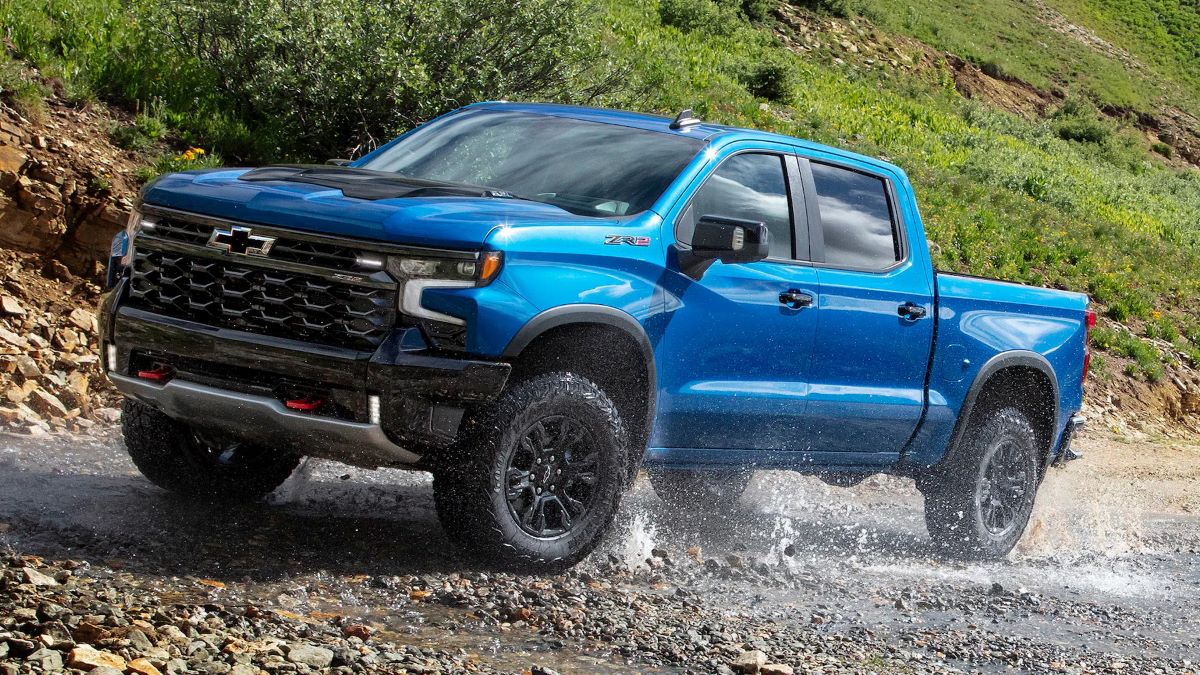
The truck’s suspension tuning strikes an excellent balance between capability and comfort, soaking up the impacts of gravel roads and farm tracks while maintaining composure when loaded or towing.
The spacious cabin provides room for passengers and gear, while thoughtful storage solutions help organize the tools and equipment that rural owners typically carry.
The Silverado’s towing capability ranks among the best in its class, with properly equipped models capable of pulling up to 13,300 pounds. More importantly for rural users, the truck maintains stability and control when towing, thanks to features like integrated trailer brake controllers and advanced stability management systems.
The truck’s payload capacity also supports the kind of heavy hauling that’s common in agricultural and construction work. Reliability has been a Silverado strength for generations, with many examples easily exceeding 200,000 miles when properly maintained.
The truck’s major components engine, transmission, and differential are designed for longevity under heavy use. This durability translates directly into strong resale values, as rural buyers know they’re purchasing a vehicle capable of providing years of dependable service.
Chevrolet’s dealer network provides strong support throughout rural America, with many small-town dealers specializing in commercial and fleet sales to agricultural and business customers.
This local expertise means Silverado owners can access knowledgeable service and parts support without traveling to major metropolitan areas. The used Silverado market in rural areas remains robust across all age ranges.
Even older examples with high mileage find ready buyers, particularly if they’ve been well-maintained and show evidence of careful use. The truck’s straightforward mechanical systems make it relatively easy for local mechanics to service, further supporting resale values by reducing ownership concerns for potential buyers.
3. RAM 1500
The RAM 1500 has carved out a significant niche in rural America’s competitive pickup truck market by focusing on the aspects of truck ownership that matter most to country buyers: ride quality, towing capability, and interior comfort.
Chrysler’s decision to separate RAM into its own brand allowed for focused development that has resulted in a truck that often leads its class in owner satisfaction surveys and has built a strong reputation for capability among rural users.
What sets the RAM 1500 apart in rural markets is its exceptional ride quality, achieved through innovative suspension design that doesn’t compromise capability.
The available air suspension system allows drivers to adjust ride height for different situations lowering for highway driving to improve fuel economy and ride comfort, or raising for ground clearance when traversing rough terrain.
This versatility appeals strongly to rural buyers who might drive hundreds of highway miles to reach a job site where they need maximum ground clearance.
The RAM’s interior represents a significant advantage in rural markets where long commutes are common. The cabin offers class-leading rear seat space, premium materials, and thoughtful design details that make extended driving less fatiguing.
Features like the available 12-inch touchscreen infotainment system and premium audio systems help pass the time during long drives, while practical elements like the center console storage and door pockets provide space for the tools and personal items that rural workers typically carry.
Engine options in the RAM 1500 focus on real-world performance rather than peak numbers. The standard 3.6-liter V6 provides adequate power for light-duty use while delivering competitive fuel economy.
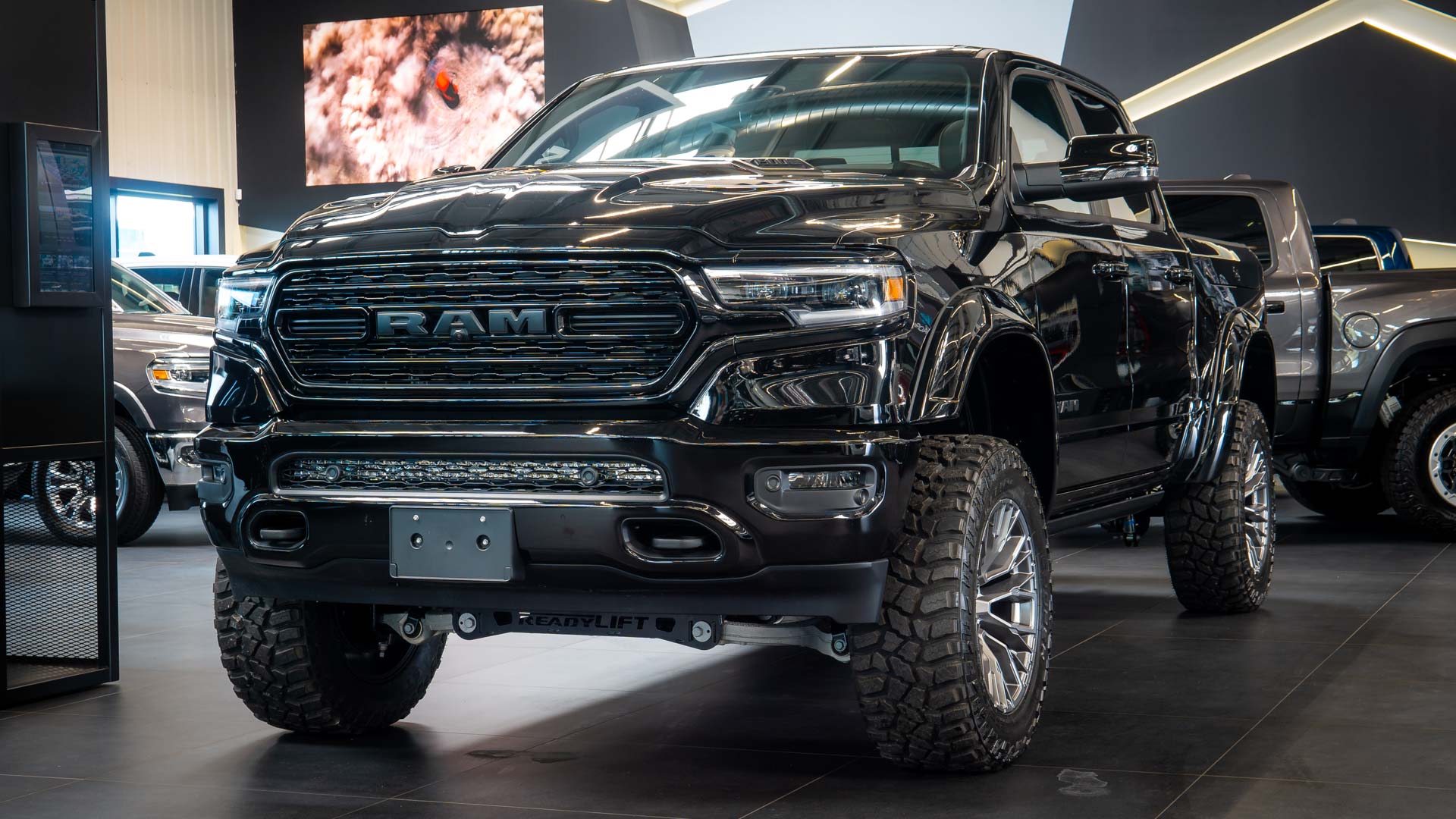
The available 5.7-liter HEMI V8 offers the kind of torque delivery that makes towing feel effortless, while the available EcoDiesel V6 provides exceptional fuel economy for those who cover high annual mileage.
The eTorque mild-hybrid system available on both gasoline engines improves fuel economy and provides additional low-end torque, benefits that rural buyers appreciate in daily use.
Towing capability ranks among the RAM 1500’s strongest attributes, with maximum towing capacity reaching 12,750 pounds when properly equipped.
More importantly, the truck’s towing behavior inspires confidence, thanks to features like active-level rear air suspension that maintains ride height regardless of trailer tongue weight, and integrated trailer brake controllers that provide smooth, controlled stopping power.
The RAM’s reputation for durability has improved significantly in recent years, supported by comprehensive warranty coverage that provides peace of mind for rural buyers who depend on their trucks for daily work.
The truck’s major mechanical components have proven capable of handling sustained heavy use, while build quality improvements have reduced the minor annoyances that can affect long-term satisfaction.
RAM’s dealer network, while not as extensive as Ford or Chevrolet, provides adequate coverage in most rural markets. The brand’s focus on commercial and fleet sales means many dealers have experience with the heavy-use applications common in rural areas, providing knowledgeable service support that understands the demands placed on these vehicles.
Resale values for RAM 1500s in rural markets have strengthened considerably as the truck’s reputation for capability and comfort has spread. Used examples, particularly those equipped with the HEMI V8 or EcoDiesel engines, find ready buyers among rural customers who appreciate the combination of capability and refinement.
The truck’s distinctive styling also helps it stand out in a market where many vehicles can appear similar, supporting stronger resale values by making individual examples more memorable to potential buyers.
4. Toyota Tacoma
The Toyota Tacoma occupies a unique position in rural America’s automotive landscape as the midsize pickup truck that has successfully bridged the gap between compact utility and full-size capability.
While America’s heartland has traditionally favored larger trucks, the Tacoma has built a devoted following among rural buyers who appreciate its legendary reliability, excellent off-road capability, and more manageable size for certain applications.
Toyota’s reputation for building vehicles that run virtually forever resonates strongly in rural markets where vehicle dependability can be a matter of safety and economic survival.
The Tacoma embodies this reputation through proven mechanical components, conservative engineering approaches, and build quality that consistently ranks among the industry’s best. Rural buyers often view the Tacoma as an investment that will provide decades of reliable service, supporting strong resale values even for high-mileage examples.
The Tacoma’s off-road capability sets it apart in rural markets where unpaved roads, steep terrain, and challenging conditions are part of daily life.
The available four-wheel-drive system includes low-range gearing and locking differentials that provide genuine off-road traction when needed. Features like crawl control and multi-terrain select help drivers navigate difficult terrain with confidence, while the truck’s approach and departure angles allow it to traverse obstacles that might stop larger vehicles.
While the Tacoma’s payload and towing capacities are modest compared to full-size trucks, they’re adequate for many rural applications. The truck can tow up to 6,800 pounds when properly equipped, sufficient for smaller boat trailers, utility trailers, and equipment haulers. The payload capacity supports hauling feed, supplies, and tools, making the Tacoma viable for light agricultural and construction work.
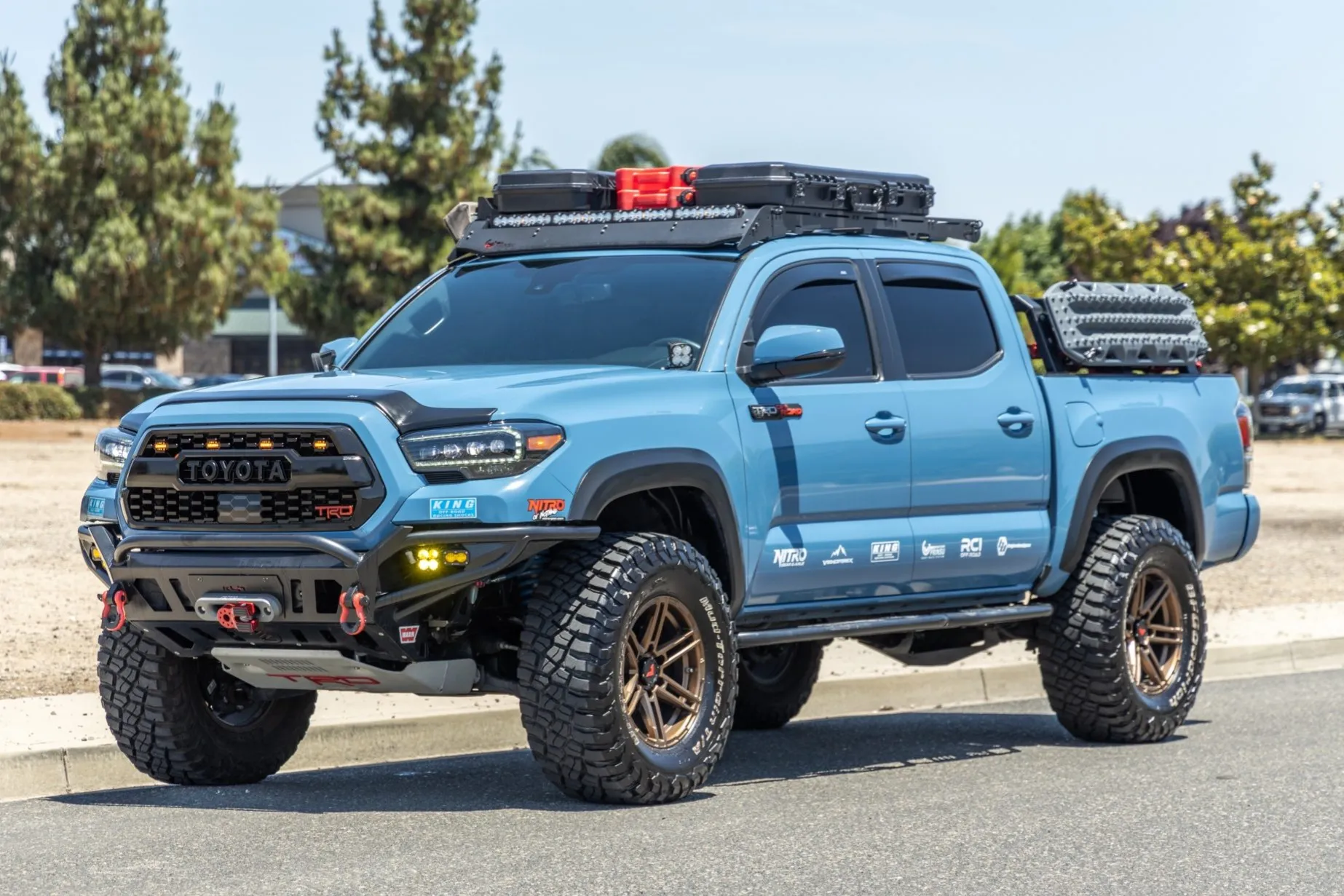
The Tacoma’s size advantage becomes apparent in rural applications where maneuverability matters more than maximum capacity. The truck can navigate narrow farm roads, fit into standard garage spaces, and park in tight spots where larger trucks struggle.
This versatility appeals to rural buyers who need truck capability but don’t always require maximum size. Fuel economy represents another Tacoma advantage in rural markets where long commutes and high annual mileage are common.
The truck’s smaller engines deliver better fuel efficiency than full-size alternatives, reducing operating costs for buyers who might drive 25,000 or more miles annually. The available four-cylinder engine provides adequate power for light-duty use while delivering the best fuel economy in the lineup.
Toyota’s dealer network provides solid support in rural areas, with many dealers specializing in the brand’s reputation for reliability and longevity. Service intervals are typically longer than domestic alternatives, reducing maintenance frequency and costs.
When service is needed, Toyota’s reputation for parts availability and technical support provides confidence that the truck can be maintained locally.
The used Tacoma market in rural areas remains exceptionally strong, with well-maintained examples holding their value better than virtually any competitor.
High-mileage Tacomas often sell for surprisingly strong prices, reflecting buyer confidence in the truck’s ability to continue providing reliable service. The truck’s reputation for longevity means that even examples with 150,000 or more miles are considered viable purchases by rural buyers.
Special editions like the TRD Pro and TRD Off-Road models command premium prices in rural markets where their enhanced off-road capability and distinctive appearance are particularly valued.
These variants often appreciate in certain markets, making them not just transportation but potential investments for buyers who choose carefully.
Also Read: 5 TPMS Setups That Don’t Fail And 5 That Always Need Resets
5. Jeep Wrangler
The Jeep Wrangler represents a unique category in rural America’s automotive market a vehicle that combines serious off-road capability with recreational appeal, creating a resale phenomenon that defies traditional automotive depreciation patterns.
In rural markets where outdoor recreation often blends seamlessly with practical transportation needs, the Wrangler has established itself as both a capable work vehicle and a weekend adventure companion.
The Wrangler’s off-road capability is legendary, built on a foundation of solid axles, low-range transfer cases, and approach angles that allow it to traverse terrain that stops most other vehicles.
In rural areas where unpaved roads, steep grades, and challenging weather conditions are common, these capabilities translate directly into practical daily utility.
The Wrangler can reach hunting camps, fishing spots, and work sites that remain inaccessible to conventional vehicles, making it invaluable for rural residents whose livelihood or recreation depends on accessing remote locations.
What makes the Wrangler particularly appealing in rural markets is its ability to transform from a practical transportation vehicle to a recreational vehicle through simple modifications.
The removable doors and roof allow for open-air driving that rural buyers appreciate during good weather, while the fold-down windshield provides an experience unavailable in any other modern vehicle.
These features create an emotional connection that goes beyond mere transportation, supporting resale values by making each Wrangler feel unique and special.
The Wrangler’s modular design philosophy supports extensive customization, another factor that appeals strongly to rural buyers who often prefer to personalize their vehicles for specific uses.
The aftermarket support for Wrangler modifications is unmatched, allowing owners to add everything from agricultural equipment mounts to serious rock-crawling hardware.
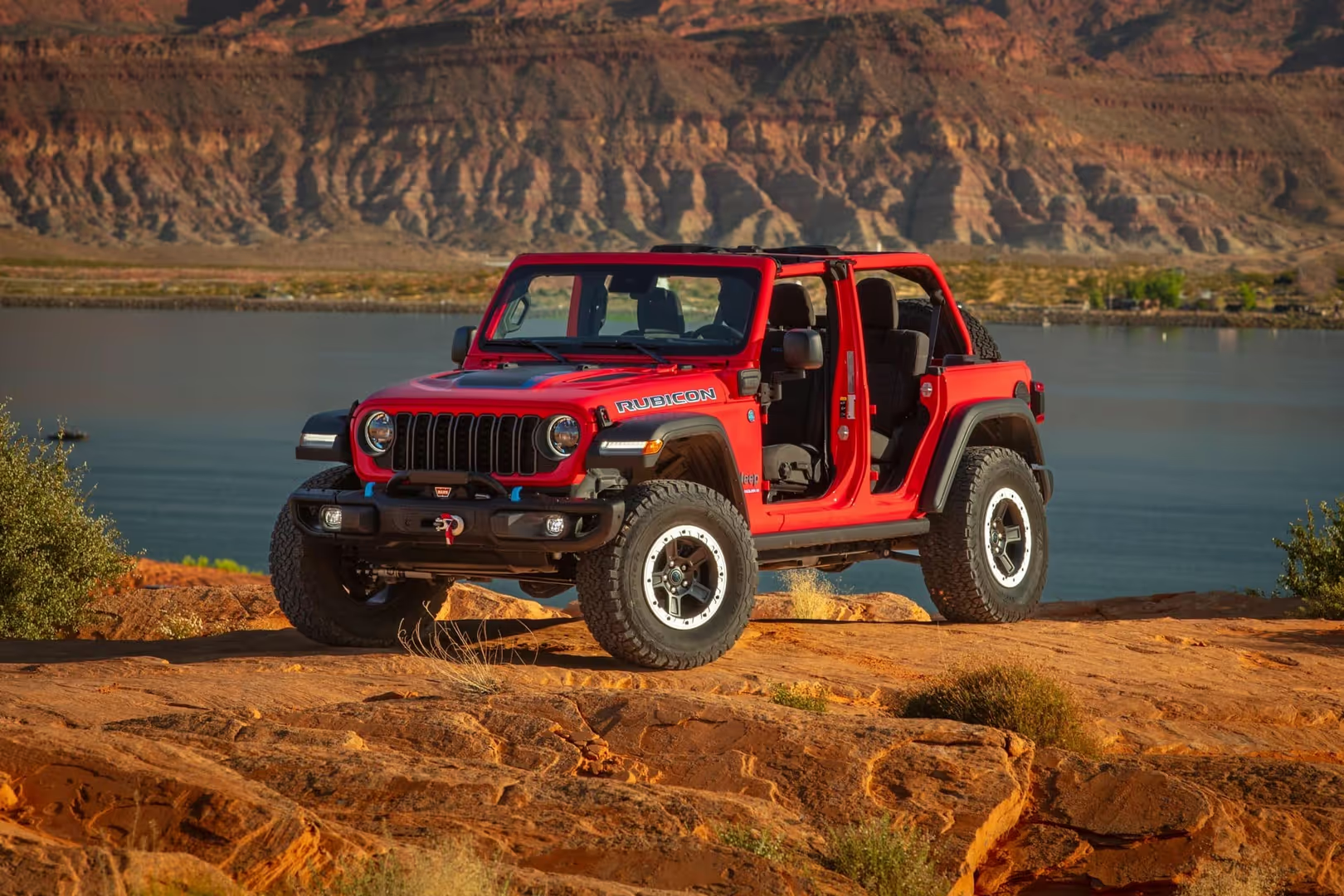
This customization potential means that used Wranglers often sell for more than their original purchase price when equipped with desirable modifications.
Engine options in the modern Wrangler lineup address different rural needs and preferences. The standard V6 provides adequate power for most applications while maintaining reasonable fuel economy.
The available EcoDiesel V6 offers exceptional fuel efficiency for buyers who cover high annual mileage, while the available V8 in Rubicon 392 models provides the kind of power that makes towing and acceleration effortless.
The Wrangler’s simplicity appeals to rural buyers who prefer vehicles they can understand and maintain themselves. The truck’s mechanical systems are straightforward and accessible, making routine maintenance easier than in more complex vehicles.
This simplicity also means that local mechanics can typically service Wranglers without specialized training or equipment, reducing long-term ownership costs and supporting resale values.
Jeep’s dealer network provides adequate support in most rural markets, though coverage isn’t as extensive as domestic truck brands. However, the Wrangler’s reputation for reliability and the availability of aftermarket support often compensates for any dealer network limitations.
The used Wrangler market in rural areas is characterized by strong demand across all age ranges and mileage levels. Well-maintained examples often sell quickly and at prices that surprise owners of other vehicle types.
Special editions like Rubicon models command premium prices, while even base Sport models hold their value exceptionally well compared to other SUVs.
The Wrangler’s resale strength is supported by its unique position in the market, no other vehicle offers the same combination of capability, character, and customization potential.
This uniqueness means that Wrangler buyers often have no direct substitute when shopping, supporting prices even for older examples. The vehicle’s cult following ensures that there are always enthusiastic buyers looking for their next Wrangler project or daily driver.
5 Cars That Nobody Wants There
Some cars struggle in rural towns, as low ground clearance and weak engines fail. Luxury sedans and small EVs sit unsold, as buyers seek power and endurance.
Luxury sedans and compact electric vehicles often struggle to find buyers in rural areas. Models like the Tesla Model 3, BMW 3 Series, and Mercedes-Benz C-Class lack the ruggedness needed for unpaved roads and extreme weather conditions.
The Fiat 500 and Smart Fortwo are too small and impractical for rural lifestyles, where space and durability matter. These vehicles often sit on dealership lots longer, as rural buyers prioritize utility over style.
1. Tesla Model S
The Tesla Model S represents everything that rural America typically avoids in vehicle purchases: cutting-edge technology, urban-centric design, and complete dependence on infrastructure that barely exists outside major metropolitan areas.
Despite its impressive performance capabilities and luxury appointments, the Model S struggles to find buyers in rural markets where practical considerations often outweigh technological advancement and environmental consciousness.
The fundamental challenge facing Tesla Model S resale in rural America is infrastructure. Electric vehicle charging stations remain sparse to nonexistent in many rural areas, creating range anxiety that goes beyond mere inconvenience to genuine isolation risk.
Rural residents often travel long distances between destinations, frequently covering 100 or more miles for routine errands or work commutes. The Model S’s range, while impressive by electric vehicle standards, becomes problematic when the nearest Supercharger station might be hours away, and home charging requires electrical upgrades that can cost thousands of dollars.
Rural electrical infrastructure often struggles to support high-speed EV charging. Many rural homes operate on older electrical systems that cannot handle the 240-volt, high-amperage charging requirements needed for convenient Tesla ownership.
Upgrading electrical service to support fast charging can cost $5,000 or more, a significant barrier for potential buyers who are already skeptical of electric vehicle technology.
The Model S’s low ground clearance and performance-oriented suspension tuning make it poorly suited for rural road conditions. Gravel roads, steep driveways, and seasonal flooding can damage the car’s undercarriage and body panels, creating expensive repair issues.
The vehicle’s air suspension, while providing excellent ride quality on paved roads, adds complexity and potential failure points that concern rural buyers who prefer simpler, more robust mechanical systems.
Service and parts availability represent major concerns for rural Tesla Model S ownership. Tesla’s service network remains concentrated in urban areas, often requiring owners to travel hundreds of miles for routine maintenance or repairs. Mobile service, while available in some areas, cannot handle major repairs or complex diagnostics.
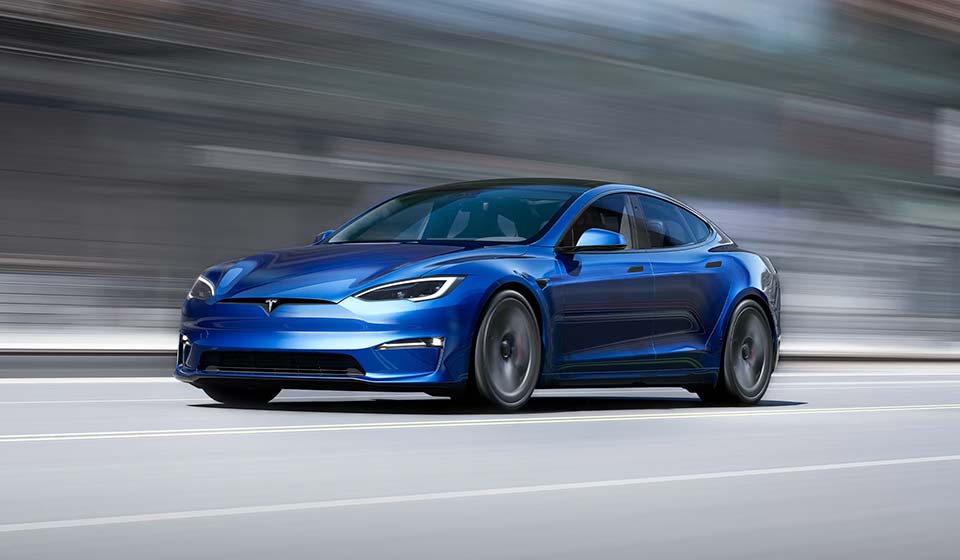
This service limitation is particularly problematic for rural buyers who depend on their vehicles for daily transportation and cannot afford extended downtime waiting for service appointments or parts delivery.
The Model S’s sophisticated technology systems, while impressive, can be overwhelming for rural buyers who prefer straightforward, intuitive controls.
The large touchscreen interface controls virtually all vehicle functions, from climate control to glove box operation, creating a learning curve that many rural buyers find unnecessary and potentially distracting.
The frequent over-the-air software updates, while adding new features, can also introduce new problems or change familiar interfaces, frustrating owners who prefer consistent operation.
Tesla’s direct sales model conflicts with rural America’s preference for local dealer relationships. Rural buyers often value the personal relationships they build with local dealers, who provide not just sales service but ongoing support, maintenance, and advocacy when problems arise.
Tesla’s factory-direct approach eliminates this local support network, leaving rural owners to navigate service issues through remote customer service channels.
The Model S’s price point, even in the used market, remains elevated compared to vehicles that rural buyers consider equivalent in luxury and capability.
A used Model S might cost as much as a new full-size pickup truck, yet lacks the utility, serviceability, and infrastructure support that rural buyers require.
This value proposition makes little sense to rural buyers who evaluate vehicles primarily on practical utility rather than technological sophistication.
Insurance and repair costs for the Model S can be significantly higher in rural areas, where body shops experienced with Tesla repair techniques and parts sourcing may not exist.
Even minor collision damage can result in total loss determinations or require shipping the vehicle to urban repair facilities, creating extended inconvenience and expense.
The Model S’s environmental benefits, while significant, resonate less strongly with rural buyers who may not prioritize emissions reduction over practical vehicle capability.
Rural areas often have lower population densities and different environmental priorities, making Tesla’s zero-emission operation less compelling than it might be to urban buyers.
2. BMW i3
The BMW i3 represents perhaps the most extreme mismatch between vehicle design philosophy and rural American needs, combining limited range, unconventional construction, and urban-focused features in a package that offers little practical value to country buyers.
This electric city car’s struggles in rural resale markets illustrate how important it is for vehicles to match their intended use environment, regardless of their innovation or engineering excellence.
The i3’s most fundamental limitation in rural markets is its limited range, which even with the range extender option rarely exceeds 150 miles under real-world conditions.
Rural residents routinely travel distances that would exhaust the i3’s battery capacity for simple errands like grocery shopping or medical appointments.
The anxiety of potentially being stranded far from charging infrastructure makes the i3 essentially unusable for typical rural transportation needs. Charging infrastructure limitations compound the range problem significantly.
Rural areas often lack public charging stations entirely, and those that exist typically offer slow Level 2 charging rather than the rapid DC fast charging that might make the i3 viable for longer trips.
The vehicle’s unique charging connector requirements can also create compatibility issues with non-BMW charging equipment, further limiting charging options in rural areas.
The i3’s unconventional construction, while innovative, creates significant concerns for rural buyers who prioritize durability and repairability. The carbon fiber body panels and space frame construction require specialized repair techniques and materials that are unavailable in most rural areas.
Even minor collision damage can result in total loss determinations because local body shops cannot perform the necessary repairs, making the i3 a risky choice for rural ownership.
Ground clearance represents another major limitation for rural use. The i3’s low stance and urban-oriented suspension tuning make it unsuitable for gravel roads, steep driveways, and the rough terrain that rural residents encounter regularly.
The vehicle’s narrow, efficiency-focused tires provide minimal traction in snow, mud, or loose surfaces, limiting mobility during adverse weather conditions that are common in rural areas.

Interior space limitations make the i3 impractical for typical rural transportation needs. The rear seats are suitable only for children, and the cargo space is minimal even with the rear seats folded.
Rural residents often need to transport tools, equipment, supplies, and multiple passengers, requirements that the i3 simply cannot meet. The vehicle’s door configuration, with rear doors that open backward, can be problematic in windy conditions common in rural areas.
Service support for the i3 is virtually nonexistent in rural markets. BMW dealerships are concentrated in metropolitan areas, often requiring rural owners to travel hundreds of miles for routine maintenance or warranty service.
The vehicle’s complex electrical systems and specialized components require factory-trained technicians and diagnostic equipment that local mechanics typically don’t possess, making independent service difficult or impossible.
The i3’s futuristic styling and unconventional proportions appeal primarily to urban buyers who value innovation and environmental consciousness over practical utility.
Rural buyers, who tend to prefer conventional, proven designs, often view the i3’s appearance as too radical or impractical. This aesthetic mismatch further limits resale appeal in rural markets where conservative vehicle choices are preferred.
Parts availability and cost represent ongoing concerns for i3 ownership in rural areas. The vehicle’s limited production run and specialized components mean that parts can be expensive and difficult to source quickly.
Rural owners cannot afford extended vehicle downtime waiting for parts delivery, making the i3’s potential reliability issues more problematic than they might be for urban owners with alternative transportation options.
The i3’s advanced technology features, while impressive, can be overwhelming for rural buyers who prefer simple, intuitive vehicle operation. The regenerative braking system’s unusual feel and the various driving modes require adaptation that many rural buyers find unnecessary.
The vehicle’s reliance on software systems for basic functions creates potential failure points that concern buyers who prefer mechanical simplicity.
Insurance costs for the i3 can be elevated in rural areas due to limited repair facility availability and the vehicle’s high parts costs. Some insurance companies may not offer coverage in certain rural areas, or may require higher premiums to account for increased risk factors associated with rural i3 ownership.
3. Smart ForTwo
The Smart ForTwo represents an automotive philosophy fundamentally at odds with rural American transportation needs, prioritizing urban maneuverability and parking convenience over the space, capability, and versatility that country living demands.
This tiny two-seater’s complete failure to gain traction in rural resale markets demonstrates how vehicle design intended for dense urban environments can become actively counterproductive in wide-open rural settings.
The ForTwo’s most obvious limitation in rural markets is its complete lack of utility for typical country transportation needs. With seating for only two passengers and minimal cargo space, the car cannot accommodate the family transportation, equipment hauling, or supply carrying that rural residents require regularly.
Rural families often need to transport multiple children, elderly relatives, tools, feed, groceries from infrequent shopping trips, and recreational equipment tasks that the ForTwo simply cannot perform.
Highway performance represents a major safety concern for rural ForTwo ownership. The car’s small engine and lightweight construction make highway merging and passing dangerous, particularly when loaded with passengers and cargo.
Rural areas often require extended highway driving at sustained high speeds, conditions where the ForTwo’s lack of power and stability becomes genuinely hazardous.
The vehicle’s short wheelbase and light weight make it susceptible to crosswinds, a common condition on rural highways with minimal wind protection.
Weather capability limitations make the ForTwo unsuitable for rural climates where seasonal weather changes can be extreme and sudden. The car’s minimal ground clearance and narrow track width provide poor snow traction, while its light weight reduces stability in icy conditions.
Rural residents cannot afford to be stranded by weather conditions that more capable vehicles handle routinely, making the ForTwo’s weather limitations a practical elimination factor. The ForTwo’s automated manual transmission, used in most model years, provides a driving experience that rural buyers find unacceptable.
The transmission’s harsh, slow shifts and poor low-speed drivability make it frustrating to operate in stop-and-go conditions or when maneuvering around farm equipment. Rural drivers who are accustomed to smooth, predictable transmission operation find the ForTwo’s jerky, hesitant behavior unacceptable.
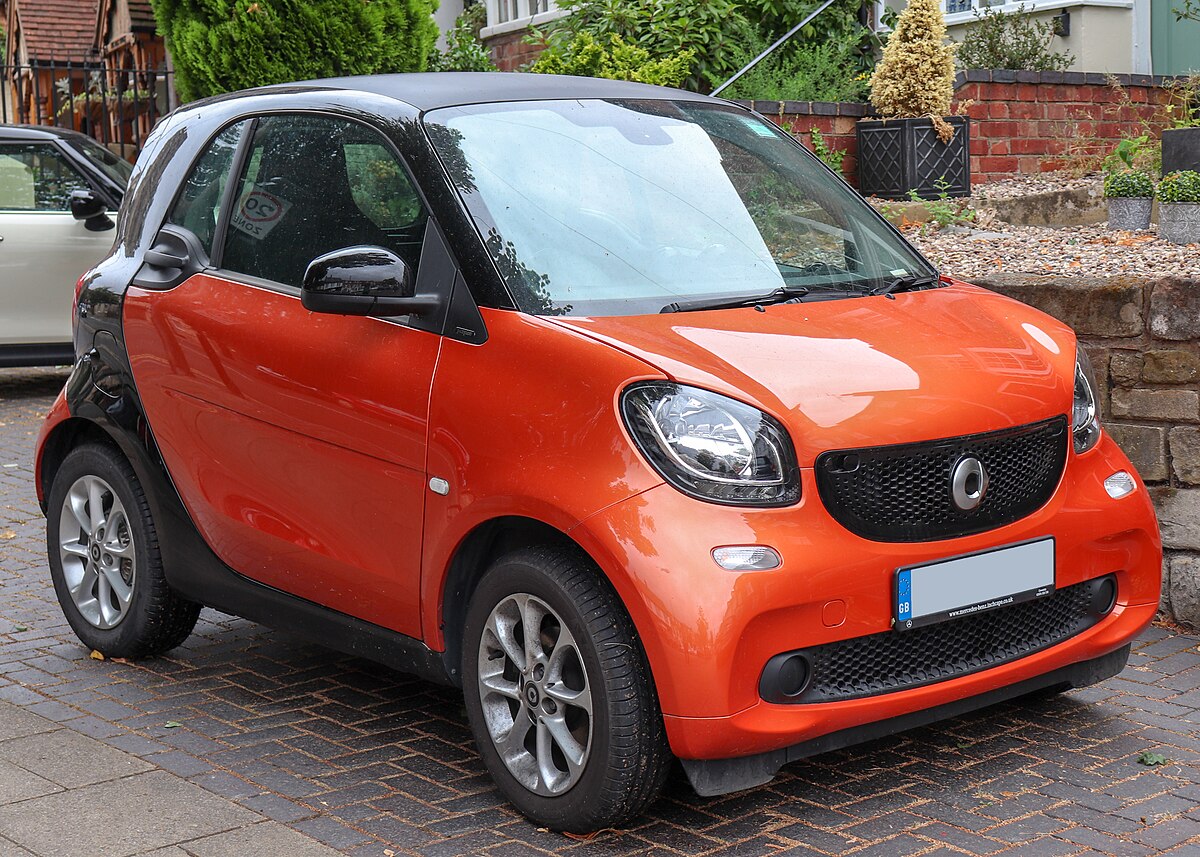
Service and parts support for the ForTwo is extremely limited in rural areas. Smart’s limited dealer network was never extensive, and the brand’s discontinuation in the United States has left owners with virtually no factory support.
Local mechanics often refuse to work on Smart vehicles due to their unusual construction and limited parts availability, leaving owners dependent on distant specialists or expensive dealer service.
The ForTwo’s European engineering philosophy conflicts with rural American preferences for mechanical simplicity and owner serviceability. The car’s complex electrical systems, unusual engine mounting, and specialized tools requirements make routine maintenance difficult for owners who prefer to handle basic service themselves.
Even simple tasks like oil changes can require special procedures and parts that local shops may not stock. Resale values for the ForTwo in rural markets are catastrophically poor, with many examples selling for a fraction of their original purchase price after only a few years.
The limited buyer pool for two-seat vehicles in rural areas, combined with reliability concerns and service limitations, creates a situation where ForTwo owners often cannot sell their vehicles at any reasonable price.
The ForTwo’s environmental benefits, while real, provide little appeal to rural buyers who prioritize practical utility over emissions reduction. Rural residents often view small, underpowered vehicles as inadequate for their needs rather than environmentally responsible, particularly when those vehicles cannot handle the transportation tasks that rural living requires.
Safety concerns about the ForTwo’s small size and minimal crash protection worry rural buyers who routinely share roads with large trucks, farm equipment, and wildlife.
The car’s tiny dimensions make it nearly invisible to drivers of larger vehicles, creating accident risks that rural residents consider unacceptable. The vehicle’s minimal crumple zones and lightweight design provide less crash protection than rural buyers expect from modern vehicles.
Storage and security represent additional concerns for rural ForTwo ownership. The car’s minimal cargo space cannot accommodate the tools, equipment, and supplies that rural residents typically carry, while its soft-top variants offer minimal security for valuable items.
Rural property crime often targets vehicles for tools and equipment, making the ForTwo’s limited security features problematic for country use.
4. Nissan Leaf
The Nissan Leaf, while pioneering in electric vehicle development and successful in urban markets, faces significant challenges in rural American resale markets where infrastructure limitations, range requirements, and practical considerations create nearly insurmountable barriers to adoption.
Despite being one of the most affordable and proven electric vehicles available, the Leaf’s limitations become particularly pronounced in rural environments where transportation needs differ dramatically from urban requirements.
Range limitation represents the Leaf’s most significant barrier to rural acceptance. Even newer Leaf models with improved battery capacity struggle to meet the distance requirements common in rural areas, where trips to town for supplies, medical appointments, or work can easily exceed 100 miles round trip.
The Leaf’s range degrades significantly in cold weather, precisely when rural residents most need reliable transportation to navigate winter conditions and reach essential services.
Charging infrastructure in rural America remains inadequate for practical Leaf ownership. Many rural areas lack public charging stations entirely, forcing owners to rely solely on home charging.
This dependence becomes problematic when electrical service interruptions, common in rural areas due to weather and aging infrastructure, prevent overnight charging.
The Leaf’s CHAdeMO fast charging connector, while once standard, is being replaced by CCS connectors in newer charging networks, potentially limiting future charging options.
The Leaf’s air-cooled battery system, while simpler than liquid-cooled alternatives, proves problematic in rural environments where extreme temperatures are common.
Hot summer conditions can cause rapid battery degradation, while cold winter temperatures severely impact range and charging efficiency. Rural Leaf owners often experience significant battery capacity loss within just a few years, creating expensive replacement costs that destroy any economic advantage the vehicle might have offered.
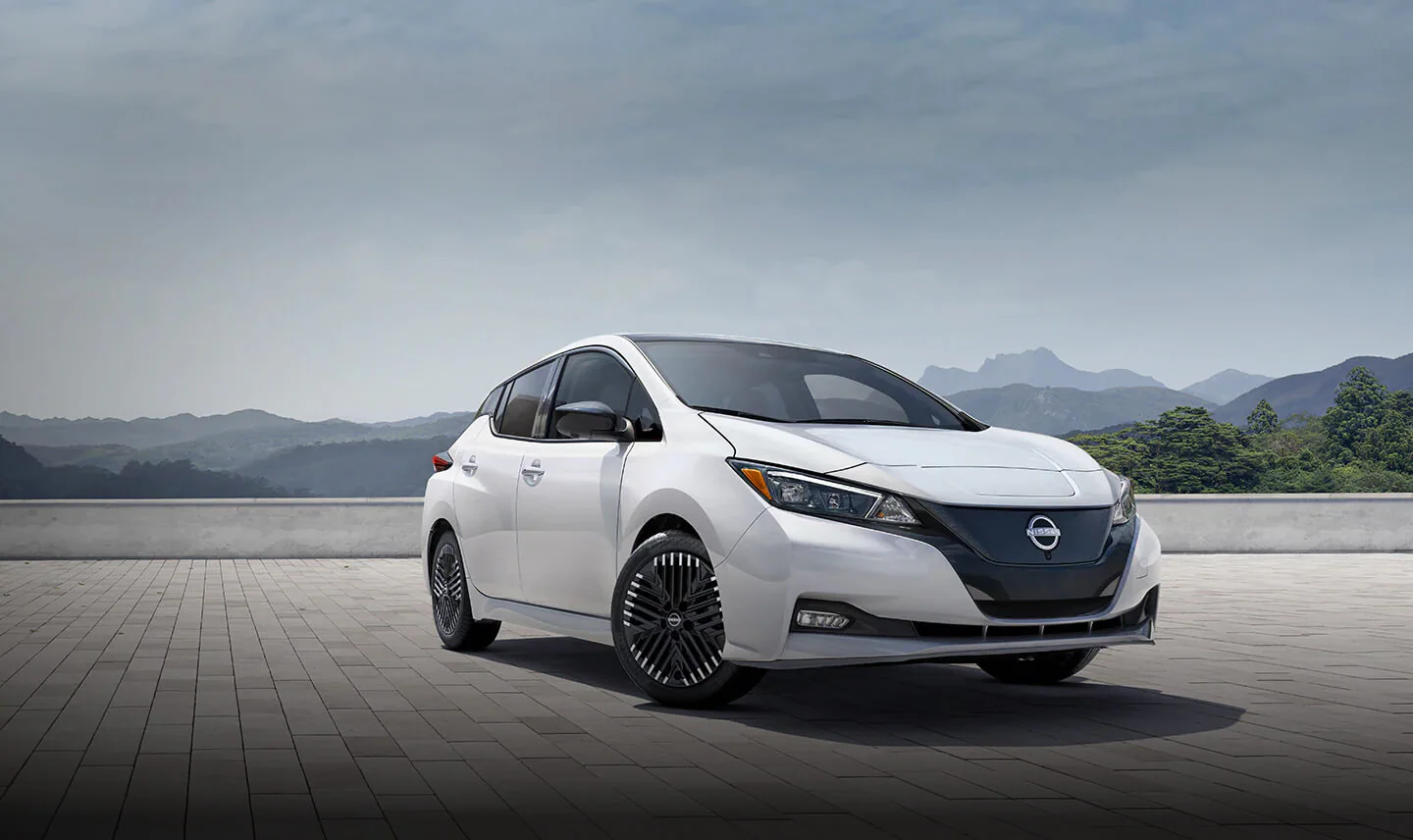
Ground clearance and suspension limitations make the Leaf poorly suited for rural road conditions. The vehicle’s low stance and car-based platform cannot handle gravel roads, steep driveways, or seasonal flooding that rural residents encounter regularly.
The Leaf’s aerodynamic body cladding can be damaged by road debris common on rural routes, creating expensive repair issues that urban Leaf owners rarely experience.
Service support for the Leaf is limited in rural areas where Nissan dealerships may be distant and technicians trained in electric vehicle service are rare.
The Leaf’s complex electrical systems require specialized diagnostic equipment and training that local mechanics typically don’t possess. When problems occur, owners often face extended vehicle downtime and expensive towing charges to reach qualified service facilities.
The Leaf’s cargo capacity and passenger space, while adequate for urban commuting, fall short of rural transportation needs. Rural residents often need to transport tools, feed, supplies, and equipment that exceed the Leaf’s carrying capacity.
The vehicle’s inability to tow trailers eliminates it from consideration for buyers who need to haul boats, utility trailers, or equipment for work or recreation.
Battery replacement costs represent a major concern for used Leaf buyers in rural markets. As original batteries degrade, replacement costs can exceed the vehicle’s entire value, creating a situation where mechanical failure essentially totals the car.
This reality makes used Leafs extremely difficult to sell in rural markets, where buyers understand that battery replacement may be required within a few years of purchase.
Environmental benefits, while significant, provide limited appeal to rural buyers who may not prioritize emissions reduction over practical capability.
Rural areas often have different environmental priorities and lower population densities, making the Leaf’s zero-emission operation less compelling than it might be to urban buyers.
The total cost of ownership, including potential battery replacement, often exceeds that of conventional vehicles that provide greater utility and reliability.
5. Fiat 500
The Fiat 500 represents European small-car philosophy applied to American market conditions, creating a vehicle that struggles to find acceptance in rural markets where its limitations become particularly pronounced.
While the 500’s charming styling and European heritage appeal to some urban buyers, rural Americans find little to appreciate in a car that prioritizes style over substance and offers minimal practical utility for country living requirements.
The 500’s most fundamental limitation in rural markets is its complete inadequacy for typical transportation needs. The tiny rear seats are essentially unusable for adult passengers, while cargo space barely accommodates a week’s groceries, let alone the tools, equipment, feed, and supplies that rural residents transport regularly.
Rural families who might need to transport multiple children, elderly relatives, or work equipment find the 500’s space limitations completely unacceptable.
Engine performance represents a major safety concern for rural 500 ownership. The base engine’s minimal power output makes highway merging and passing dangerous, particularly when the vehicle is loaded with passengers and cargo.
Rural areas require sustained highway driving at high speeds, conditions where the 500’s lack of power becomes a genuine hazard. The available turbo engine provides better performance but at the cost of significantly reduced fuel economy and increased complexity.
Build quality issues have plagued the 500 throughout its production run, creating reliability concerns that particularly worry rural buyers who depend on their vehicles for essential transportation.

Problems with electrical systems, transmission operation, and engine components are common, and repairs often require specialized knowledge and parts that local mechanics cannot provide. Rural owners cannot afford extended vehicle downtime waiting for parts or qualified service.
The 500’s automated manual transmission, available in many model years, provides a driving experience that rural buyers find completely unacceptable.
The transmission’s harsh, jerky operation and slow response make it frustrating to operate in any driving condition, but particularly problematic when maneuvering around farm equipment or navigating steep, winding rural roads.
The system’s tendency to overheat under stress can leave drivers stranded in situations where reliable operation is essential. Service support for the 500 is extremely limited in rural areas where Fiat dealerships are rare and many have closed since the brand’s struggles in the American market.
The remaining dealers are typically located in metropolitan areas, requiring rural owners to travel hundreds of miles for warranty service or specialized repairs. Local mechanics often refuse to work on Fiat vehicles due to unfamiliarity with the brand’s systems and difficulty obtaining parts.
The 500’s depreciation curve in rural markets is so steep that many owners find themselves immediately underwater on financing, unable to sell or trade their vehicles without significant financial loss.
This reality makes the 500 one of the worst automotive investments possible for rural buyers, who typically expect their vehicles to retain reasonable value throughout their ownership period.
The combination of poor resale values and reliability concerns creates a financial trap that makes the 500 actively harmful to rural buyers’ transportation budgets and needs.
Also Read: 5 Vehicles That Qualify for Insurance Discounts and 5 That Cost More Each Year

